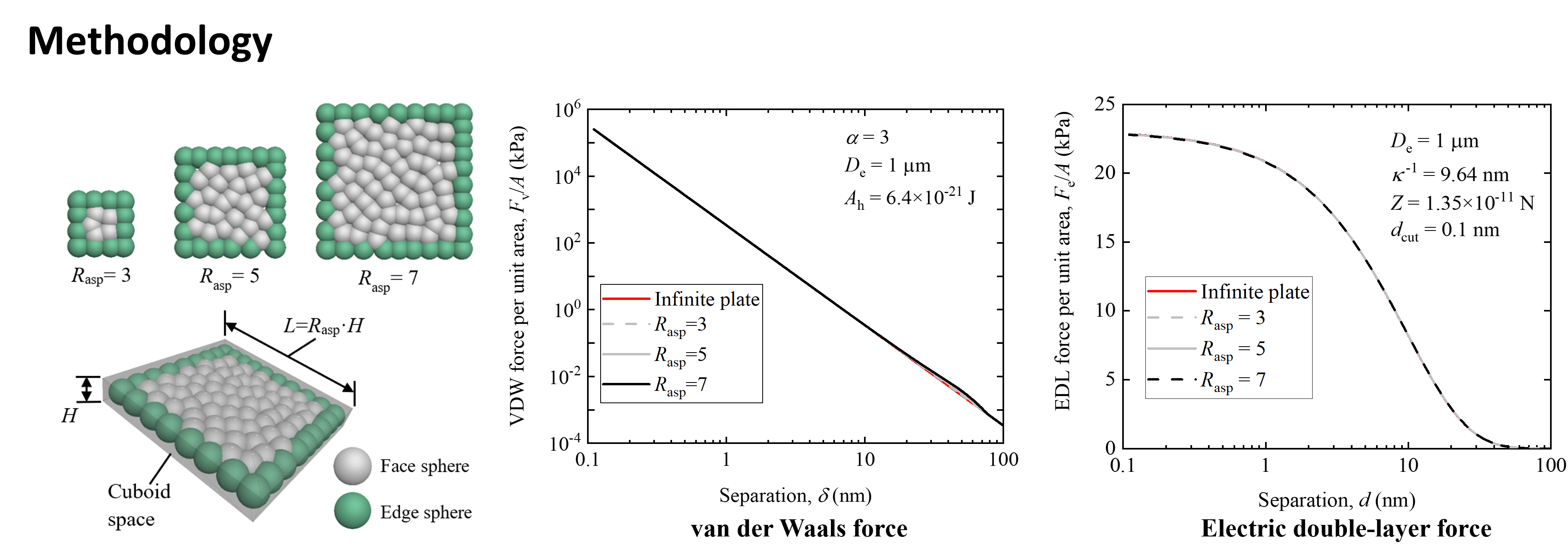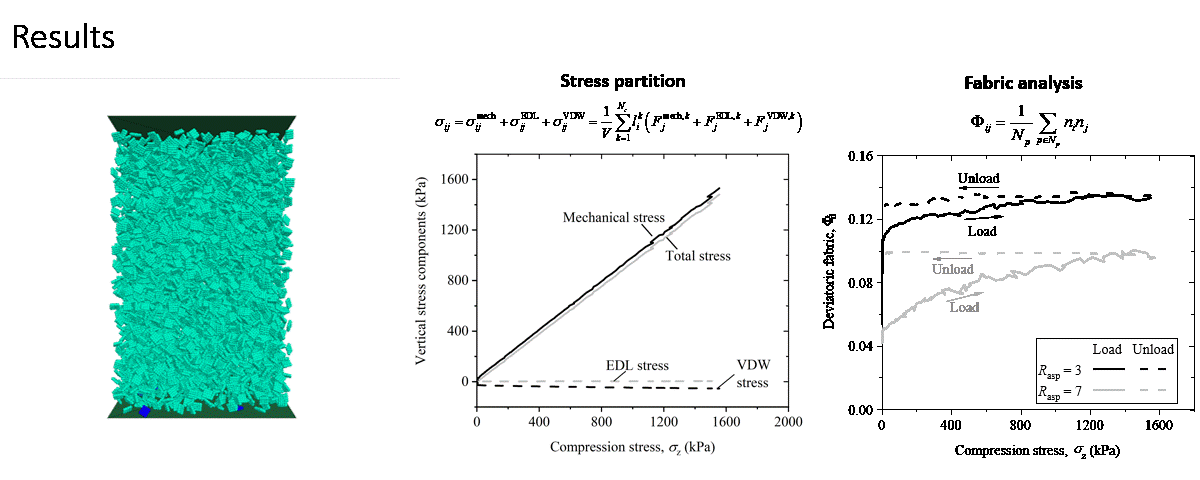The soil can be considered as a collection of grains or aggregates with microstructures, aggregates are composed of particles with interparticle voids, and grains or particles are made of minerals with atomic structures. Thus, the origin of mechanical behaviours/properties of the soil can be investigated by downscaling, and the mechanical modelling of the soil can be conducted by upscaling.
We adopted the molecular dynamics method to simulate mechanical behaviours/properties of clay minerals (montmorillonites, kaolinite, illite) at nano scale. We have also utilized the molecular dynamics method as an effective tool to provide new insight concerning the mineral-mineral interface and the mineral-epoxy interface under dry and lubricated conditions at nano scale.
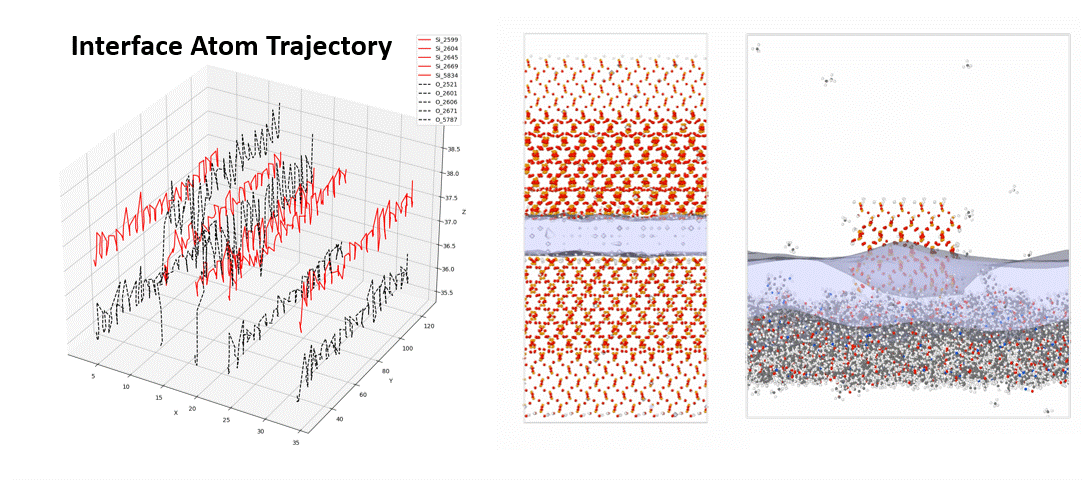
To reveal the interfacial mechanisms between soil and FRP at the microscale, the interfacial mechanical behavior of epoxy-quartz (i.e., FRP-soil subsystem) has been investigated through molecular dynamics (MD) simulation of nanoindentation and nanoscratching, considering different quartz-indenter shape, indentation depth, loading rates, etc. Abrasion models have been proposed based on the relationship between forces and displacements. Moreover, the steered molecular dynamics (SMD) pulling simulation and the modified Bell’s model are used to evaluate the adhesion properties of FRP-soil interface induced by moisture, revealing the microscopic deterioration mechanism.
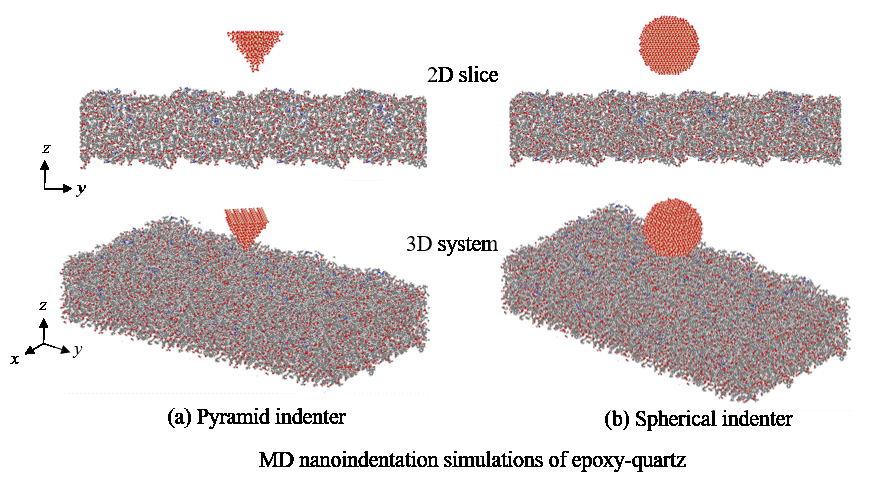
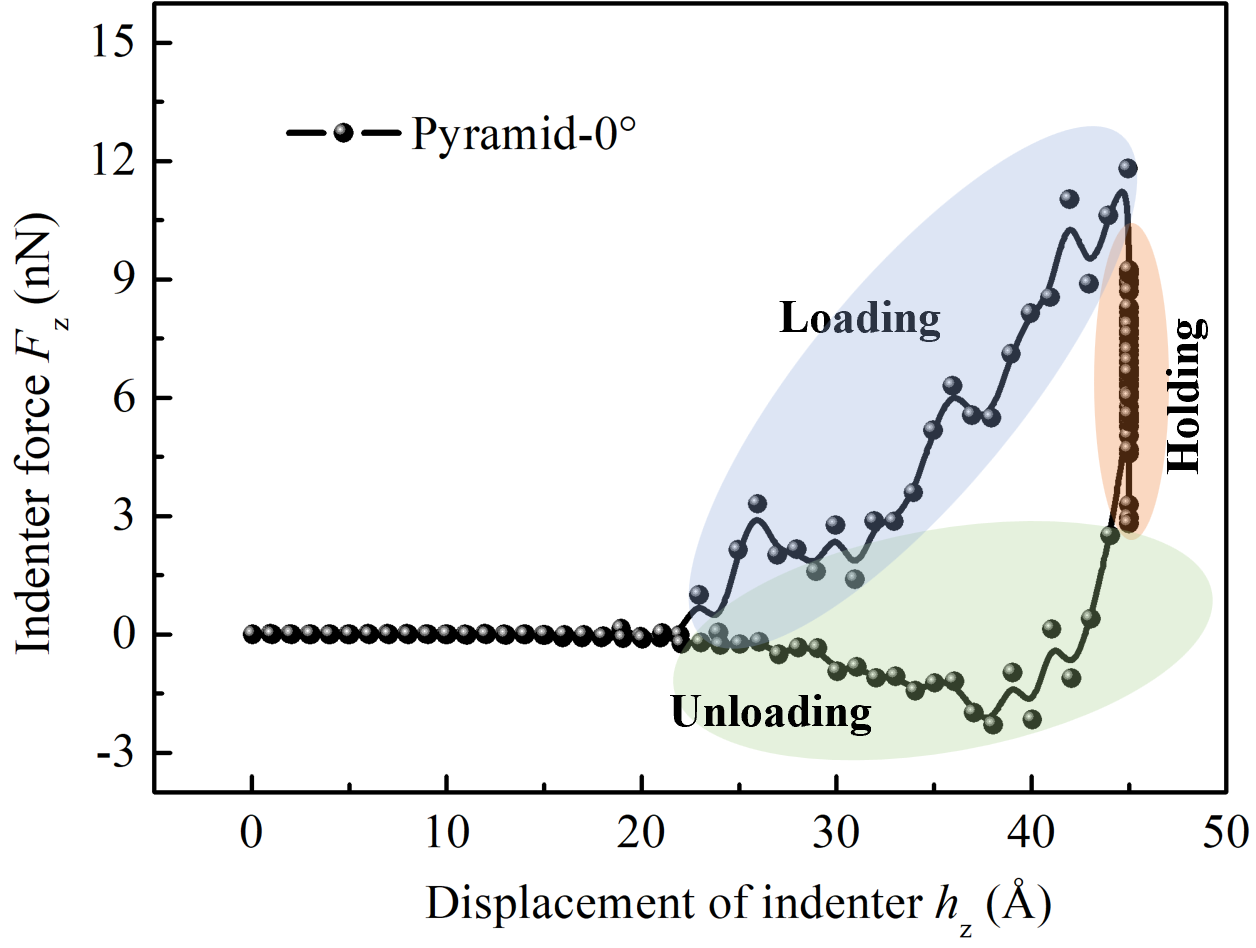
We use molecular simulation methods to uncover soil-water interactions at the nanoscale, focusing on mineral surface water, interlayer water, and water between clay particles. Furthermore, we explore the use of coarse-grained (CG) methods to upscale and simulate the behavior of clay at the microscale.

Coarse-graining methods of clay minerals and epoxy resin
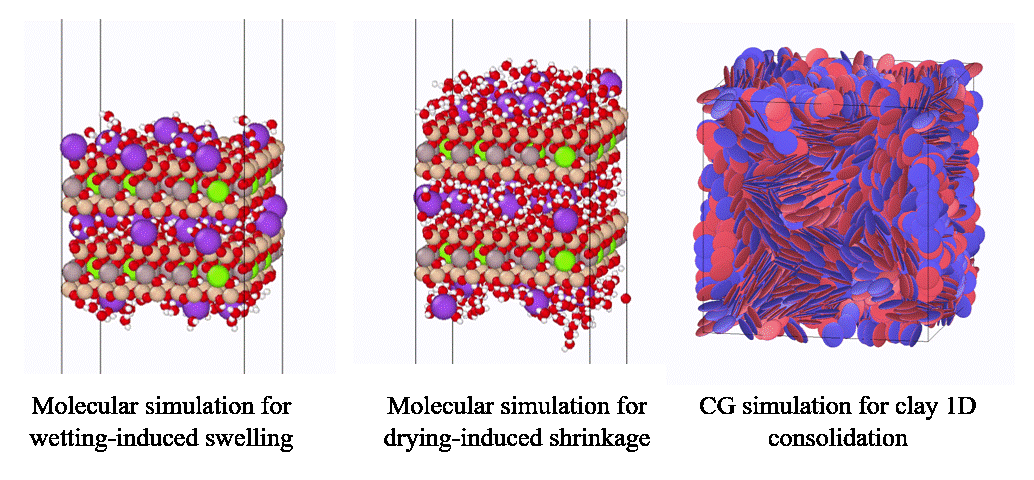
2.1 Development of DEM codes
We developed several DEM codes for realistic modeling of granular particles with arbitrarily irregular shapes. Compared with the simplified shape models such as disk-clump, the proposed method can consider more realistic contact mechanics between irregular shape particles. The capability and efficiency of the developed program will pave a viable pathway for the researchers to conduct more quantitative and credible studies on how the realistic particle shapes would affect the macro- and micromechanical properties of granular materials.


We proposed several efficient methods for generation of realistic granular particle specimen with different particle sizes and shapes in DEM.


To enhance the understanding of the macroscopic response of granular sand from a microscopic perspective, we have proposed a novel Hollow Cylinder Torsional Shear Test (HCTST) model with flexible membrane boundaries in DEM. For the complex loading conditions, the rotation of the major principal stress axis (α) and intermediate principal stress ratio (b) are mainly considered: α = 45 is found at a transitional state under otherwise same loading conditions, beyond which specimens with 𝑎 greater than 45 demonstrate different microscopic responses, such as force chain buckling and spatial distribution of contact orientation, compared to those with 𝑎 less than 45. These different microscopic responses further lead to macroscopic differences, such as the formation of shear bands and non-coaxiality.

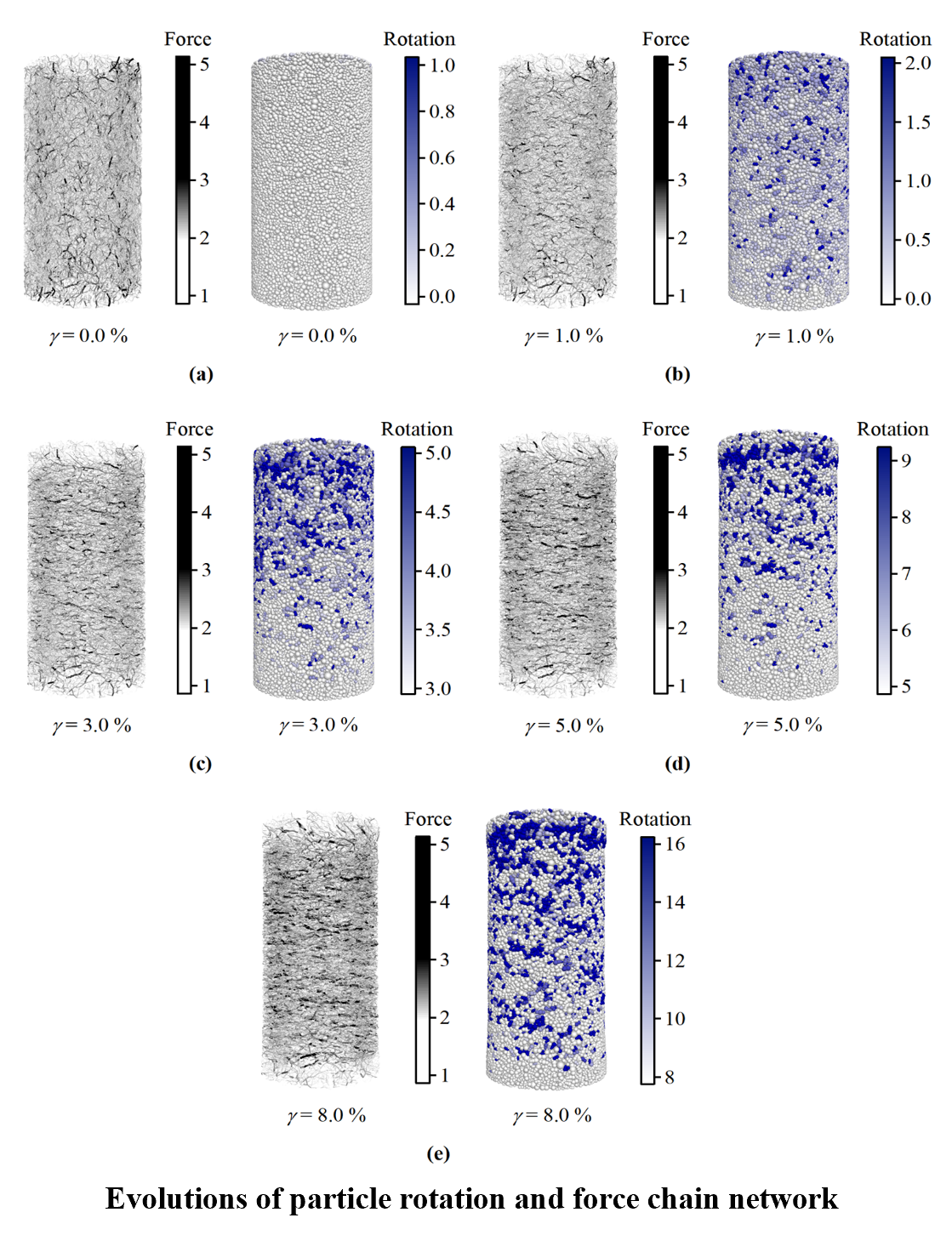


We proposed several efficient methods for modeling of realistic biaxial/triaxial tests in DEM considering flexible membrane boundary and realistic particle shapes. The presented works lay a foundation for further studies on revealing the mechanisms of the conventional triaxial test, e.g., the effect of end restraint and rubber membrane. Moreover, the proposed systematic framework can be applied to precisely capture the real mechanical properties of various types of granular materials in DEM simulations.
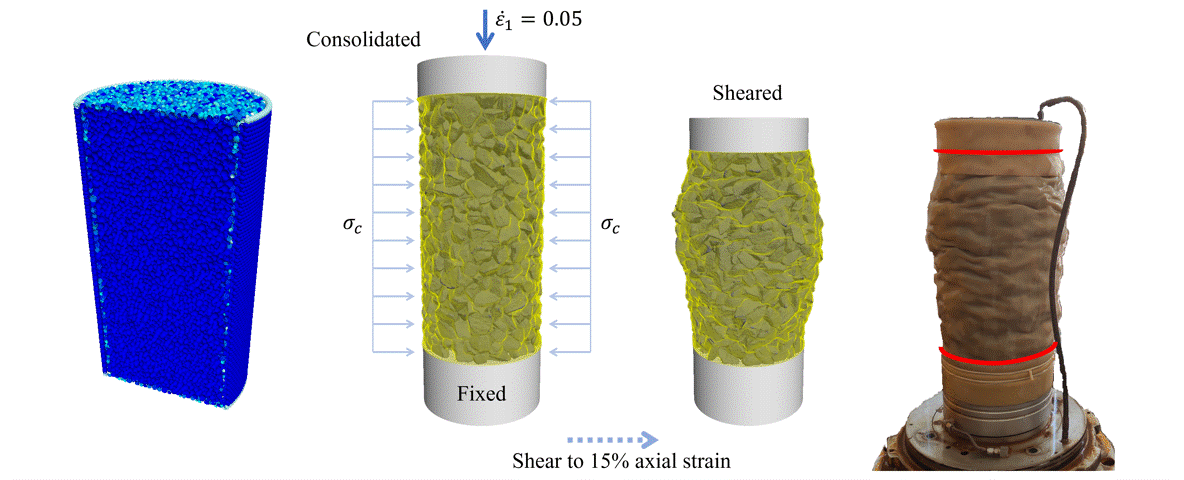
For granular materials, samples with different grain sizes exhibit different deformability and strength. We have focused on investigating the size effect of granular materials in two aspects: under mechanical loading with significant grain crushing, the sample with bigger grain size has more deformability and less strength, whilst under mechanical loading with few or no grain crushing but significant shear band, the sample with bigger grain size has bigger strength. Our work includes experimental study, discrete element modelling and continuum mechanics modelling up to the engineering application.

We conducted a series of coupled DEM/FEM simulations to investigate the complex micromechanical behaviours of rigid soft particle mixtures.
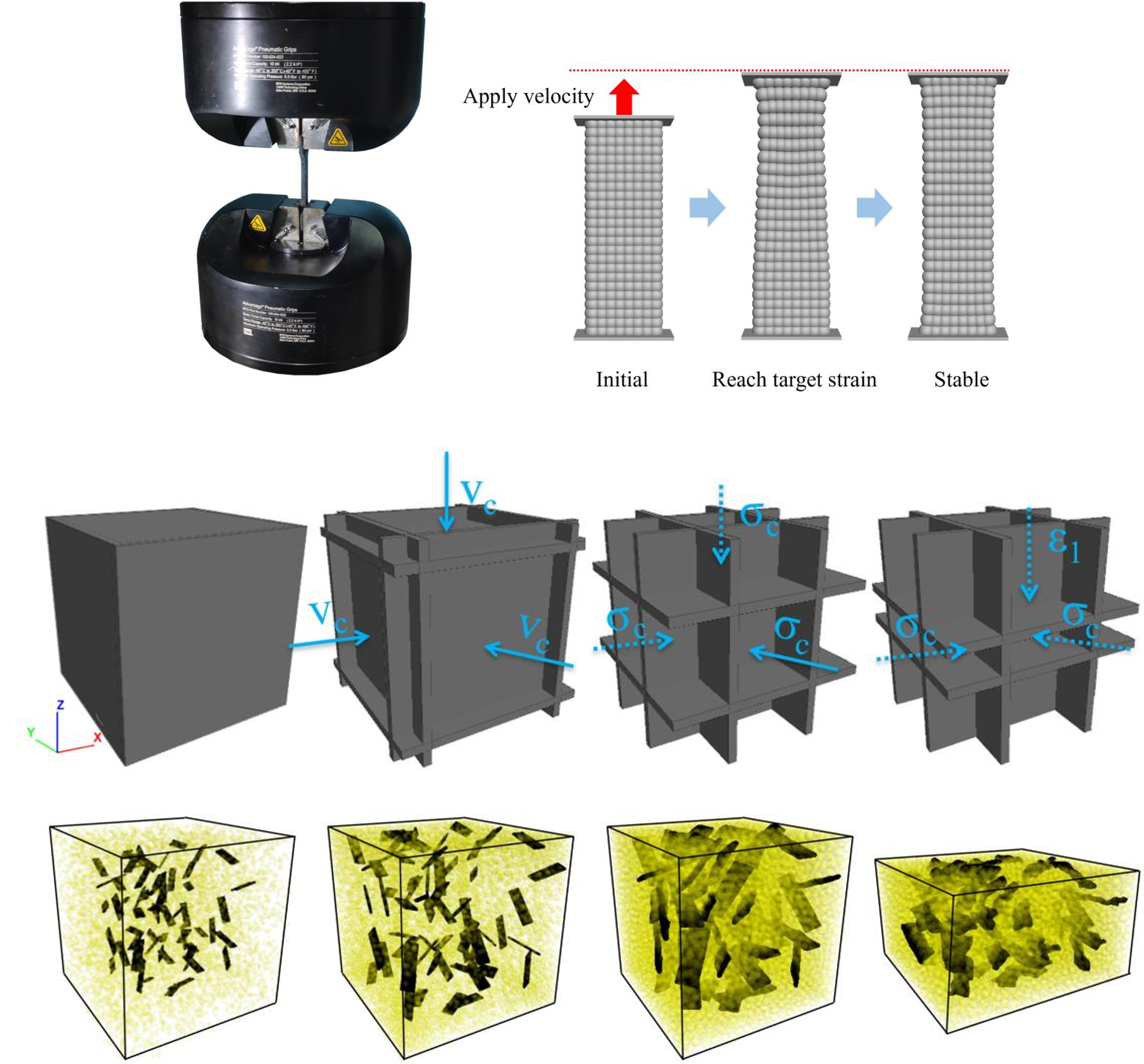
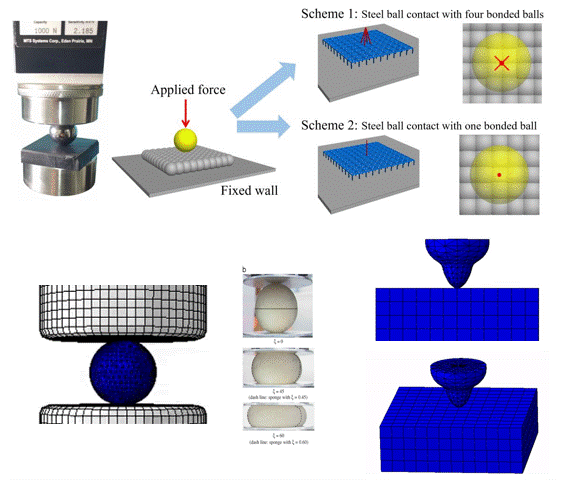
2.2 Analysis of suction bucket-granular soil interaction under pulling actions of mooring lines
The structure-foundation-soil interaction poses a challenging and critical aspect within geotechnical engineering. In our study, we shifted focus towards the tension exerted by mooring lines rather than employing simplified forces on suction buckets to investigate bucket-soil interactions comprehensively, spanning from a macroscopic to microscopic scale using the DEM-FEM method. We have effectively modeled discontinuities and significant soil deformations, capturing intricate motions and deformations of suction buckets. Through a series of analyses at both macro and micro scales, we have delineated the mechanical behaviors governing soil failure around suction buckets down to the particle level, presenting conclusive schematics.

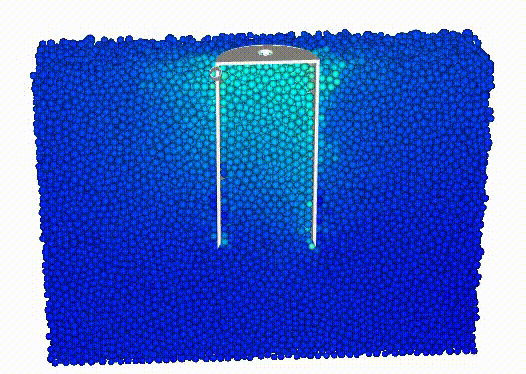
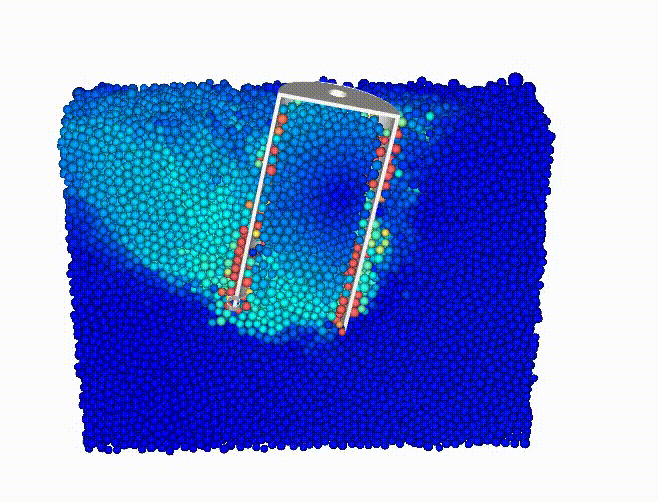
The mechanical behavior at soil–structure interface (SSI) has a crucial influence on the safety and stability of geotechnical structures. We simulated a series of interface shear tests with discrete element method to investigate the frictional characteristics of SSI and the associated displacement localization under constant normal stiffness condition at both macro- and microscales. In addition, a quantitative analysis of the effect of particle crushability on the behavior of the soil-structure interface is performed.


The face stability of a tunnel is extremely important during the excavation. We analyzed the progressive face failure of a shield tunnel in sand is with coupled discrete element method (DEM) and the finite difference method (FDM) in three-dimension. Soils at the tunnel face, where large deformation occurs and continuum mechanics description does not apply, are modeled with DEM. And the FDM is used for the rest areas where deformation and displacement are relatively small. The soil movement, ground surface movement, supporting force of the tunnel face, and the distribution of microscopic contacts are analyzed during the progressive failure of the tunnel face, which demonstrate a significant effect of particle shape.
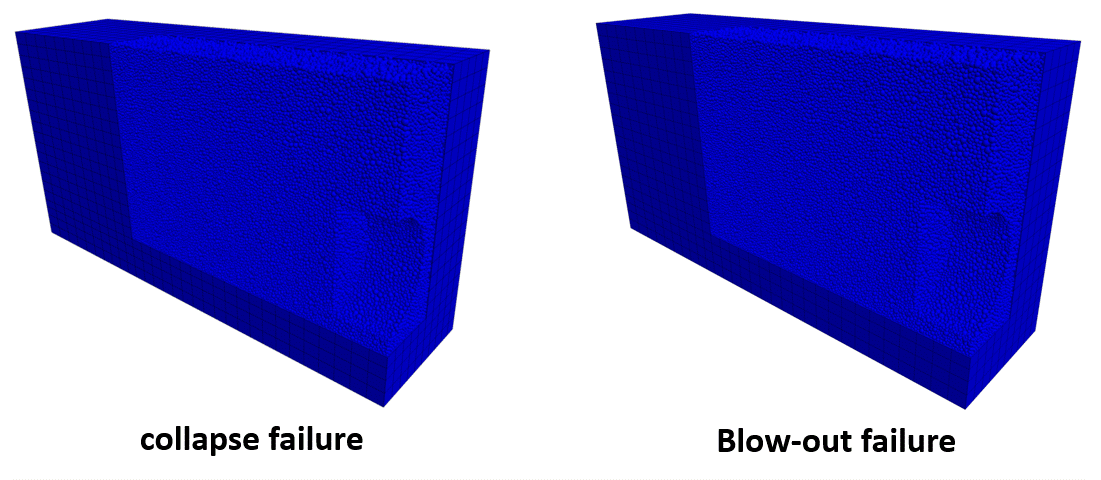
2.3 Practice of CFD-DEM in geotechnics
Considering the discrete properities and the complexity of soil-fluid interactions, we introduced the DEM coupled with CFD (computational fluid dynamics) to investigate the internal erosion in sandy soils from macro and micro perspectives. Both the influence factors and its consequences on the mechanical behavior were investigated.
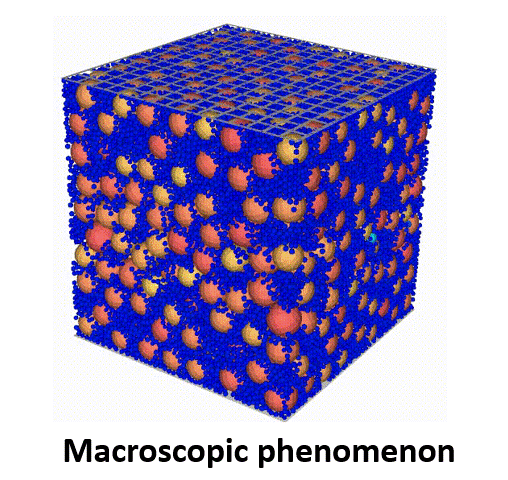

We investigate the effects of the particle aspect ratio and angularity on the suffusion susceptibility of gap-graded solids based on resolved CFD-DEM simulations. The simulated macro-response of the eroded particle mass is presented and interpreted from the micromechanical perspective, including the evolution of particle orientation, drag force, and coordination number.
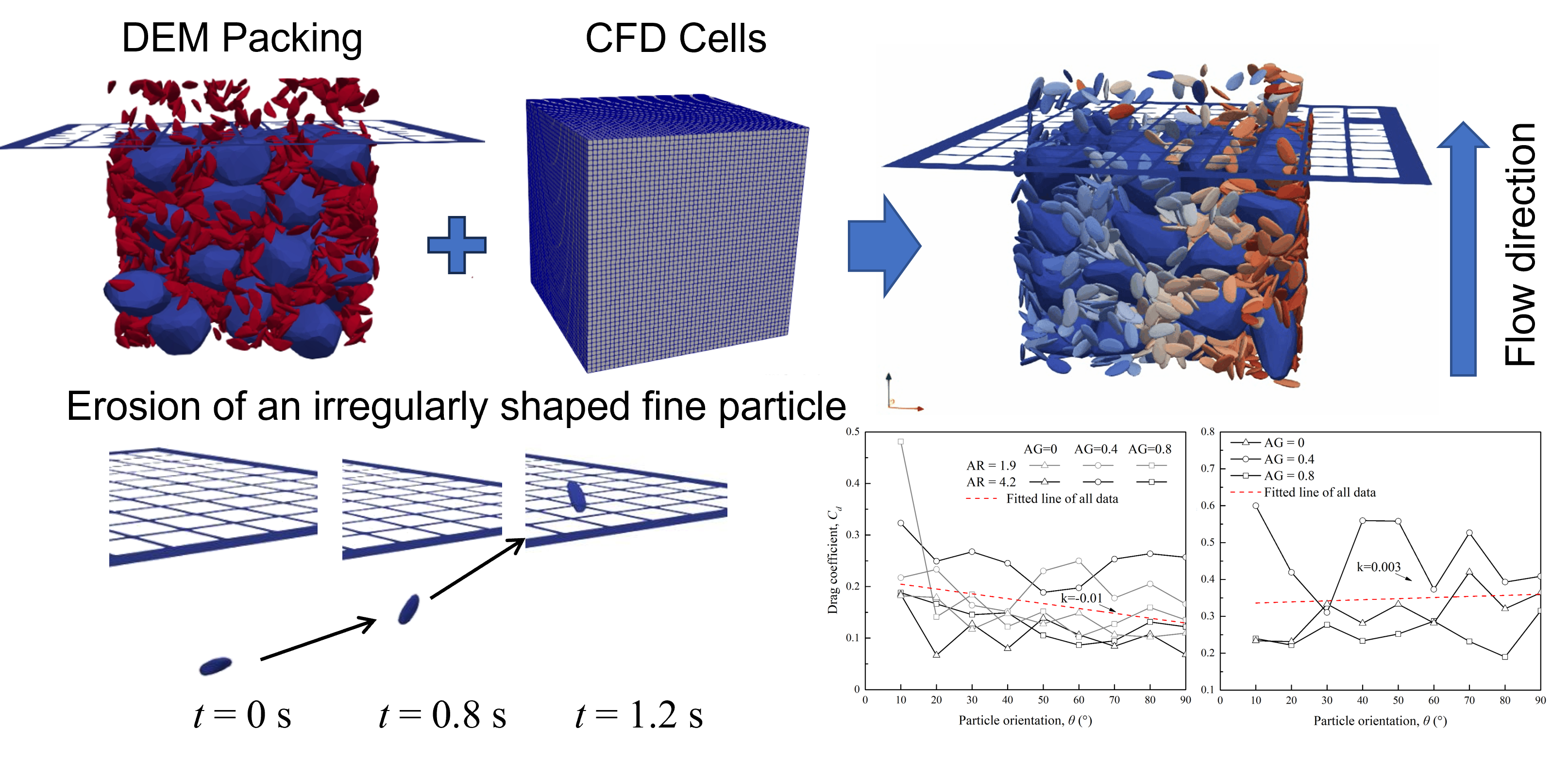
Hydro-mechanical analysis of particle migration in fractures with CFD-DEM
Particle migration driven by fluid flow is presented in many geological and geotechnical contexts, such as sand production in oil exploitation, internal erosion in dikes or dams, and proppant movement in petroleum engineering. We investigate the fluid flow-induced particle migration in rock fractures by coupling the computational fluid dynamics (CFD) and the discrete element method (DEM), focusing on the particle movements and the associated migration mechanisms. Three modes of particle movement were obtained and the velocity of particle assembly passing through the fracture was negatively related to the aggregation of particles while positively related to the erosion rate of particle assemblies within the fracture.


2.4 Modelling clay soils considering physicochemical forces between particles
Clay particles feature small particle sizes (< 2 μm) and platy shapes with a large aspect ratio. These geometric features result in a large specific surface area (typically 10~500 m2/g), which renders clay susceptible to changes in interparticle physicochemical interactions – such as the van der Waals attraction and electric double-layer repulsion – which are negligible in coarse-grained soils like sand. To understand the role of these physicochemical interactions in the mechanical behaviour of clays, a novel contact model based on the Derjaguin–Landau–Verwey–Overbeek (DLVO) theory has been proposed. The model has been utilised to model the 1D compression of kaolin clays, showing that the van der Waals interaction contributes considerably to the compressibility of clay up to a compression stresses of 15 – 70 kPa, and importance of physicochemical interactions reduces with increasing compression stress.
